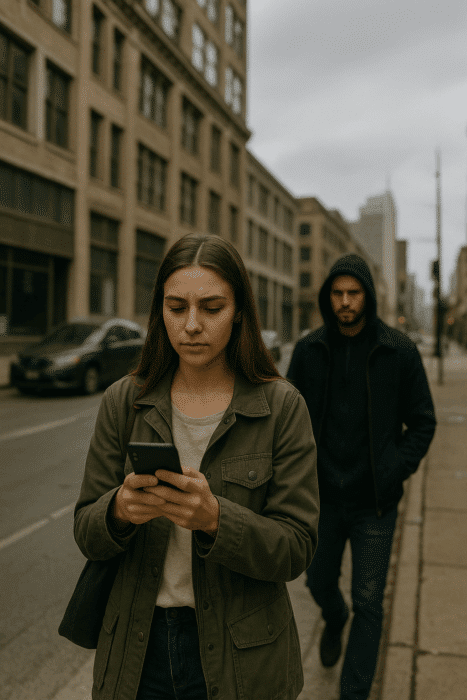Inside the Criminal Mind: Why They Pick You — and How to Avoid Being a Target
Criminals don’t pick their victims by chance.
They weigh risk vs. reward.
They’re hunting, not fighting.
If you know what they look for, you can stop looking like prey.
As a self-defense instructor and student of criminal psychology, I’ve interviewed repeat offenders, studied real-world cases, and spent years teaching everyday people how to stay safe. What follows are the top five reasons criminals choose their victims—and how to protect yourself.
1. Low Situational Awareness
Criminals target the distracted.
They want people glued to their phones, zoned out, or wearing headphones.
If you’re in Condition White—unaware—you’re vulnerable.
Why? Because if you don’t see the attack coming, you can’t fight, flee, or draw your weapon.
You’re stuck on “the X”—the exact spot they’ve chosen to strike.
The Data:
94% of defensive gun uses don’t involve firing a shot. Just showing the firearm often ends the threat.
Women who use a firearm in self-defense are 250% less likely to be injured than if they comply—and 400% less likely than if they resist without one (DOJ statistics).
What to Do:
Keep your head up – Stay aware of your surroundings.
Scan your surroundings.
Walk with confidence.
Don’t look like an easy target.
2. Isolation
Criminals don’t want resistance or witnesses.
They target people who are alone—especially in dark, quiet, or low-traffic areas.
That gives them time to act and to escape.
Avoid Isolation:
Park under lights, near entrances, and in populated zones.
Leave with others when possible.
Don’t be the last one out of a store or event.
Stay with the crowd in unfamiliar places.
Remember: They’re not looking for a challenge. They’re looking for a win.
3. Predictable Patterns
Routine makes you easier to track.
You park. You shop. You return—distracted, arms full, keys out.
That’s when they strike.
Parking lots offer cover and predictability. You’re not paying attention. They are.
Break the Pattern:
Vary your routines.
Carry your bags in your non-dominant hand.
Keep your weapon-side hand free.
If you feel watched, go back inside and ask for security.
Criminals admit it often: If you look prepared, they’ll walk away.
4. High Reward, Low Risk
Most people carry these three valuables:
Something to spend (cash or cards), something to call (a phone), something to drive (car keys.)
That’s a quick payday for a criminal.
You raise your risk when you flash wealth—designer bags, flashy jewelry, high-end electronics. These mark you as a high-value target.
Blend In:
Avoid flashy gear in sketchy areas.
Dress down.
Go “gray man”—look like you have nothing worth stealing.
Stay alert, especially at gas stations, ATMs, and parking lots.
5. Lack of Immediate Consequences
Criminals study police response times.
In some areas, they know it takes officers 5–10 minutes to arrive.
They plan around that delay.
But what stops them faster than police? Armed citizens.
In one major survey, 57% of felons said they feared armed victims more than cops.
Why? Because a trained, armed citizen is already there.
Why It Matters:
Police are minutes away.
You’re seconds from danger.
Carrying a firearm—legally and responsibly—gives you a fighting chance.
Immediate consequences change behavior.
Criminals want control. When they lose it, they flee.
Final Thoughts: Don’t Look Like Prey
I once spoke with a career criminal. He didn’t “hunt” at random.
He disqualified people:
Groups
Alert individuals
People near law enforcement
He waited for someone alone, distracted, and unaware—easy to follow, easy to control.
Here’s the truth:
You don’t need to be a ninja or carry the biggest gun on the market.
You just need to look harder to kill than the next person.
You’ve already taken the first step by reading this. Now take the next one:
Train. Stay aware. Protect your loved ones. Own your space.
Because criminals are hunting—and you don’t have to be prey.

